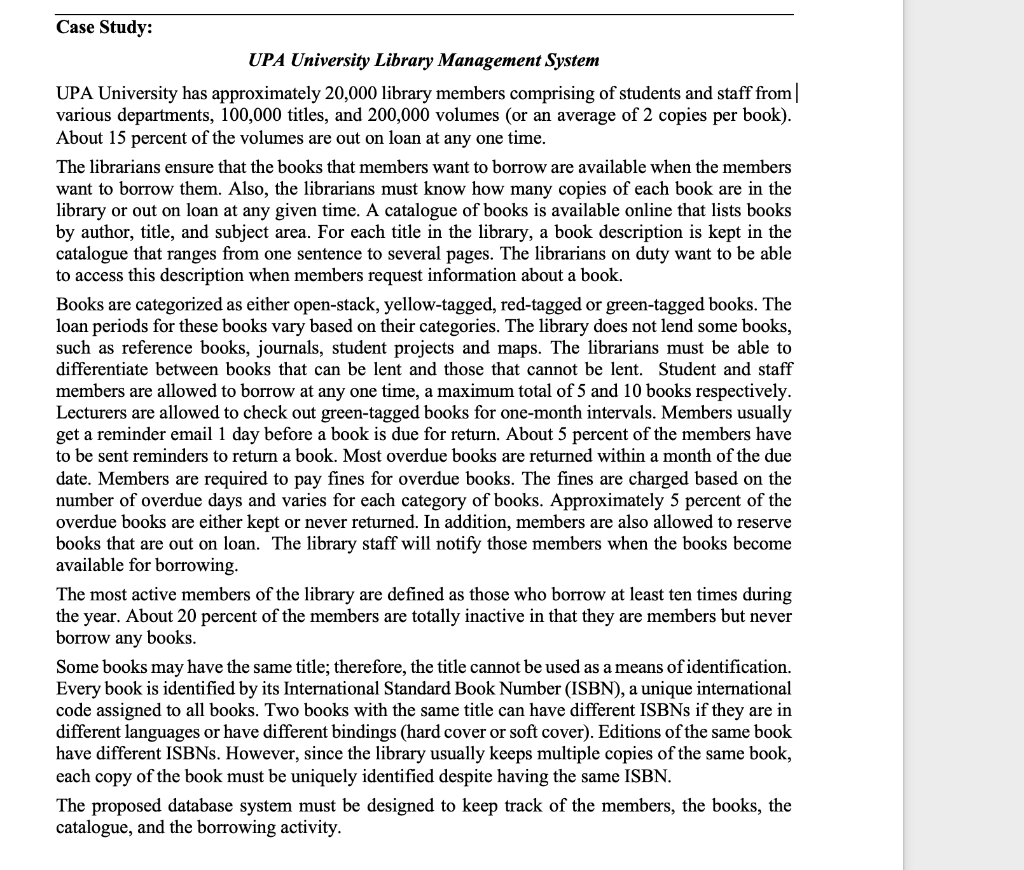

Part Component 1 a) Database and Database Management System Disadvantages of file-based system Advantages of Database and DBMS, functions of DBMS Relate your discussion to the case study . Case Study: UPA University Library Management System UPA University has approximately 20,000 library members comprising of students and staff from various departments, 100,000 titles, and 200,000 volumes (or an average of 2 copies per book). About 15 percent of the volumes are out on loan at any one time. The librarians ensure that the books that members want to borrow are available when the members want to borrow them. Also, the librarians must know how many copies of each book are in the library or out on loan at any given time. A catalogue of books is available online that lists books by author, title, and subject area. For each title in the library, a book description is kept in the catalogue that ranges from one sentence to several pages. The librarians on duty want to be able to access this description when members request information about a book. Books are categorized as either open-stack, yellow-tagged, red-tagged or green-tagged books. The loan periods for these books vary based on their categories. The library does not lend some books, such as reference books, journals, student projects and maps. The librarians must be able to differentiate between books that can be lent and those that cannot be lent. Student and staff members are allowed to borrow at any one time, a maximum total of 5 and 10 books respectively. Lecturers are allowed to check out green-tagged books for one-month intervals. Members usually get a reminder email 1 day before a book is due for return. About 5 percent of the members have to be sent reminders to return a book. Most overdue books are returned within a month of the due date. Members are required to pay fines for overdue books. The fines are charged based on the number of overdue days and varies for each category of books. Approximately 5 percent of the overdue books are either kept or never returned. In addition, members are also allowed to reserve books that are out on loan. The library staff will notify those members when the books become available for borrowing. The most active members of the library are defined as those who borrow at least ten times during the year. About 20 percent of the members are totally inactive in that they are members but never borrow any books. Some books may have the same title; therefore, the title cannot be used as a means of identification. Every book is identified by its International Standard Book Number (ISBN), a unique international code assigned to all books. Two books with the same title can have different ISBNs if they are in different languages or have different bindings (hard cover or soft cover). Editions of the same book have different ISBNs. However, since the library usually keeps multiple copies of the same book, each copy of the book must be uniquely identified despite having the same ISBN. The proposed database system must be designed to keep track of the members, the books, the catalogue, and the borrowing activity








